Ever wonder how many people click on the outbound links on your WordPress site to visit the sites you link to? You can find out quite easily by setting up outbound link click tracking in GA4.
Once you know how many clicks your outbound links get, you can use that data to create new content, form new partnerships, gain insight into your users’ interests, and more.
In this article, I’ll show you how to track outbound link clicks in Google Analytics 4 (GA4). Using WordPress? There’s an even simpler way to track those outbound link clicks that I’ll take a look at, too.
What are outbound links?
Outbound links are hyperlinks that direct users from one website to another. These links provide external references, improve credibility, and enhance SEO by connecting to authoritative sources. Search engines use outbound links to assess content relevance and trustworthiness. Proper use of outbound links can improve user experience and search rankings.
Now, it’s easy to get confused between inbound and outbound links.
To help you understand the difference, consider this example. Here’s a link to WPForms. This is an outbound link on our website because if you click it, you’ll land on the WPForms website, which is outside of the monsterinsights.com domain.
Make sense? It’s the opposite of internal links. For example, when I link to this tutorial on tracking button clicks, I’m adding an internal link to another page on monsterinsights.com.
Make Data-Driven Decisions with Outbound Link Click Data
How can tracking outbound link clicks help you enhance your marketing campaigns and grow your business? There are actually quite a few ways you can use your click data in your data-driven marketing strategy:
- Understand user behavior: By analyzing which outbound links receive the most clicks, you gain a clearer understanding of the topics, products, or services that resonate with your audience. This information allows you to tailor your content strategy to focus on areas that attract the most interest.
- Find new content ideas: If certain outbound links are popular, consider creating similar internal content or resources to keep traffic on your site. Developing in-depth articles or tools related to those topics can improve user retention and SEO performance.
- Form new partnerships: If you’re sending a lot of traffic to another website, you can use your click data to reach out to them and form a partnership, like starting affiliate marketing, collaborating on a content piece, or getting a backlink.
- Improve user experience (UX): Understanding where users click can inform the placement of other links and calls-to-action (CTAs) on your site. Strategic placement can enhance UX and guide users toward desired actions.
Ready to track your outbound links? I’ll dive into the tutorials next.
How to Track Outbound Links in Google Analytics 4 (GA4)
Google Analytics 4 is a powerful tool for tracking your site’s performance and finding out how your visitors use your website.
While you can track outbound links in GA4 only, there’s a much easier way to track them in WordPress + GA4. So, I’ll show you the instructions for WordPress first.
Don’t have WordPress? Skip down to the Google Analytics only section.
Track Outbound Links in WordPress
If you’re a WordPress user, there’s one plugin you can install that’ll automatically start tracking outbound link clicks on your websites: MonsterInsights.
MonsterInsights is the best Google Analytics plugin for WordPress. It allows you to easily connect your WordPress site with Google Analytics so you can view all the data that matters most right in your WordPress dashboard.
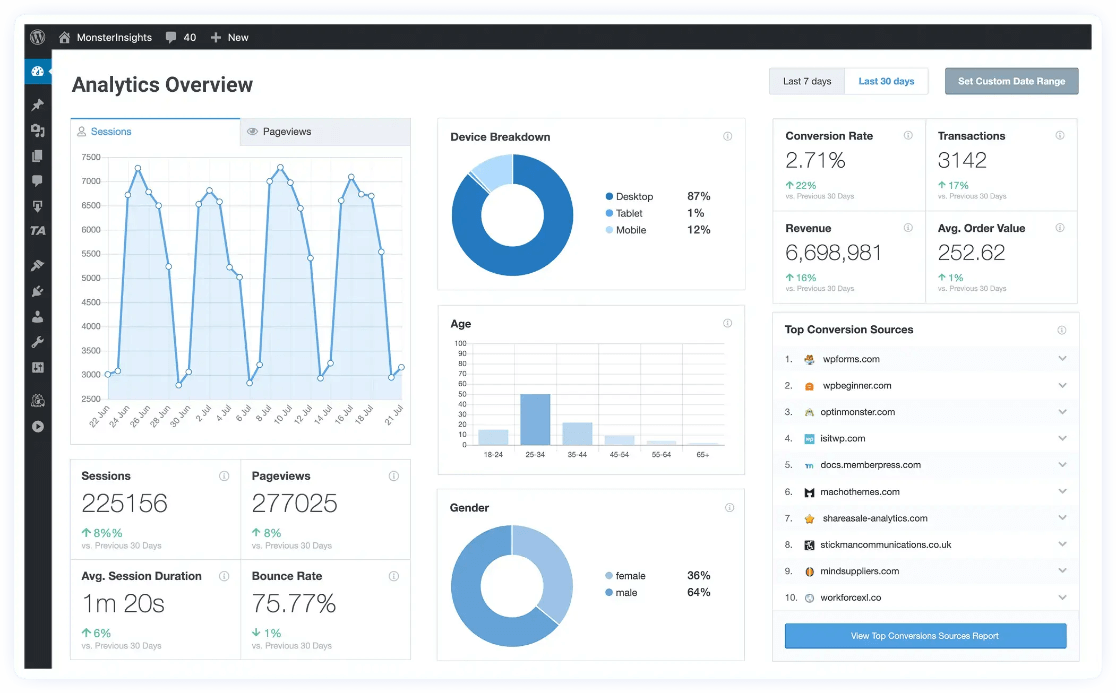
Plus, with the click of a button, you can set up sophisticated tracking features such as event tracking, eCommerce tracking, form tracking, custom dimension tracking, outbound link tracking, and many more things that Google Analytics doesn’t track out of the box.
So to track outbound links, all you have to do is download and install MonsterInsights. While MonsterInsights Lite will track your outbound link clicks, you’ll want to grab the plugin at the Plus level or above to get the Outbound Links report right in your WordPress dashboard.
Once you’ve grabbed a license, download the ZIP files from your account area under the Downloads tab.
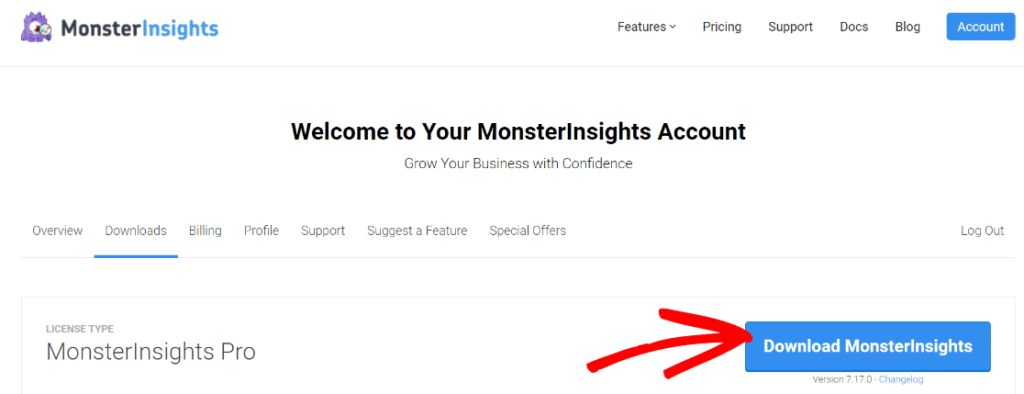
Next, upload the plugin to your WordPress website. You can do that by going to Plugins » Add New » Upload Plugins and clicking the Install Now button.
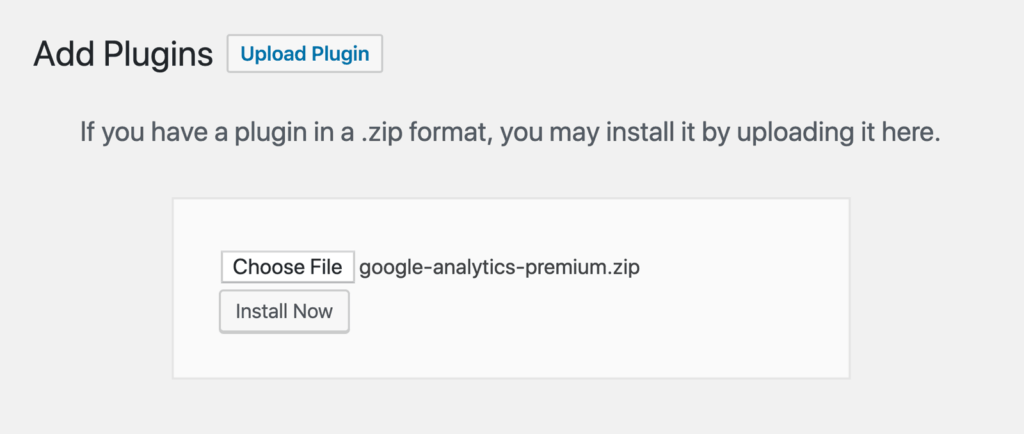
After that, click the Activate Plugin button.
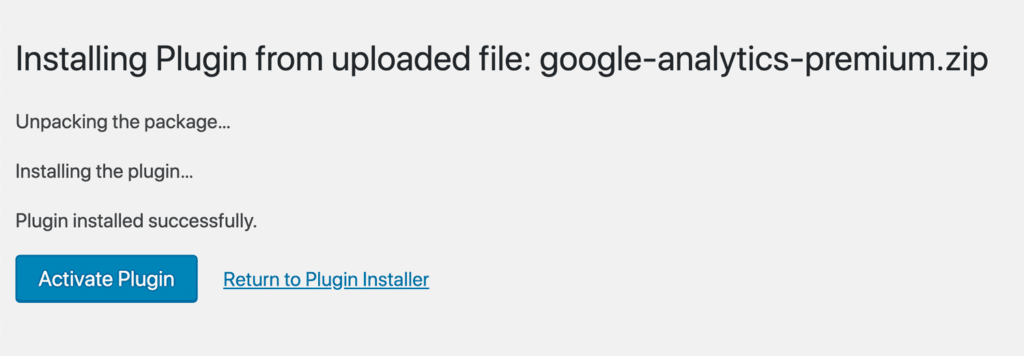
Now, you’ll need to connect Google Analytics to your WordPress website. Using MonsterInsights, it’s a walk in the park. Just follow the steps in its setup wizard and the plugin will add Google Analytics to your site without the need to edit code.
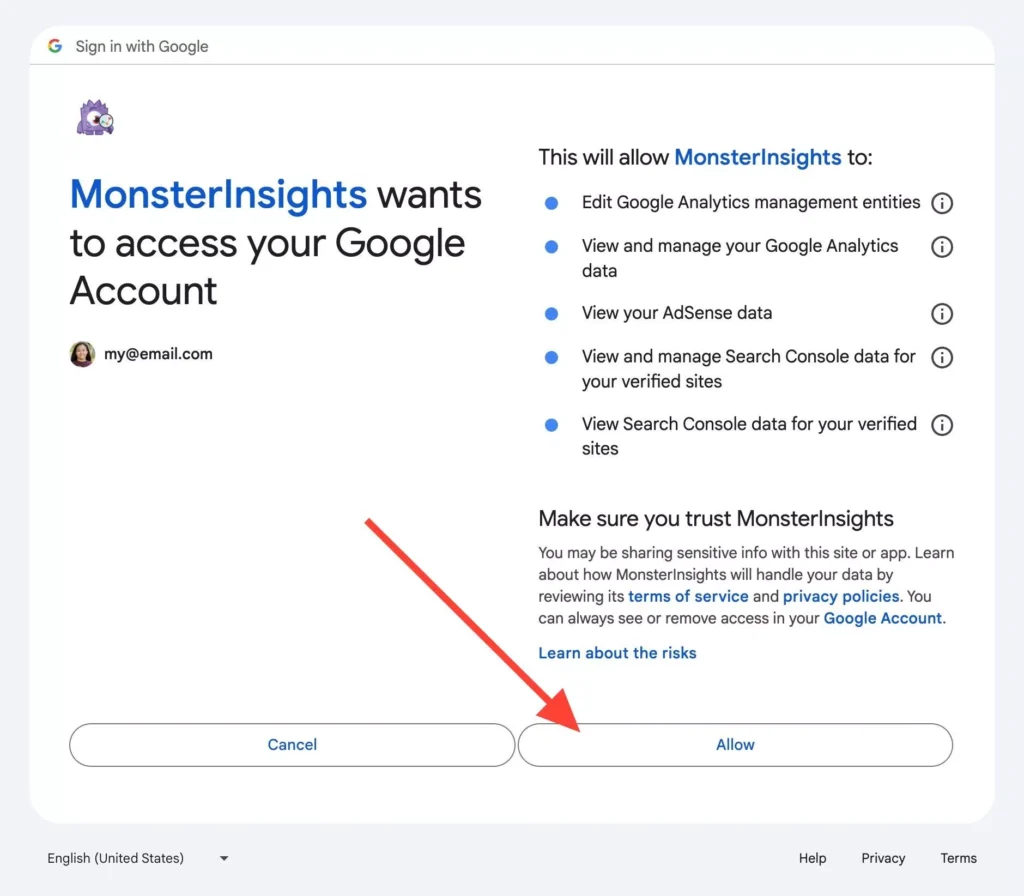
For more help getting started, check out our step-by-step guide on how to connect your site to Google Analytics with MonsterInsights.
Once that’s done, MonsterInsights will automatically start to track all your outbound links by setting up events for you. No additional steps are required!
Now, you can view the Top Outbound Links report to see which outbound links are getting clicked on your site. Head to Insights » Reports » Publishers » Overview.
In the report, you can see your top outbound links and the number of clicks they got.
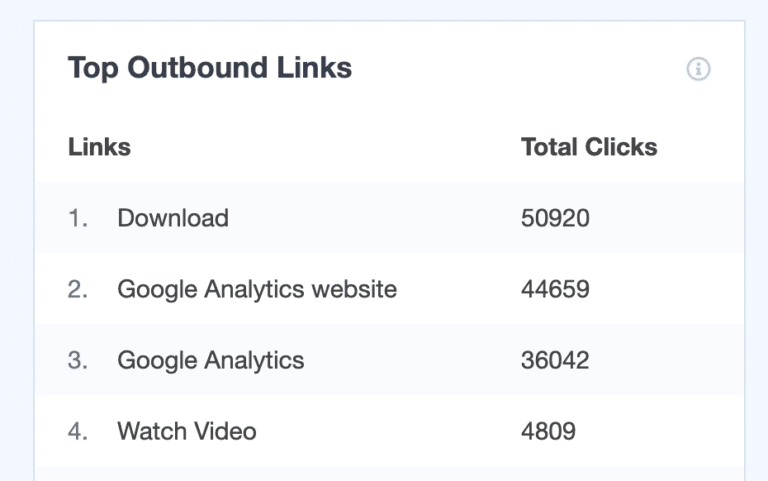
MonsterInsights users, if you need more data than what’s included in the Top Outbound Links report, MonsterInsights also sets up the settings you need in GA4 to create the custom report below. Just make sure to skip the enhanced measurement settings adjustment. You want all those settings to be OFF.
How to Track Outbound Links in Google Analytics 4
If you’re not using MonsterInsights to track outbound link clicks, you’ll need to turn on tracking in your Google Analytics property. To do that, open your property and navigate to Admin » Data streams » (your data stream) » Enhanced measurement:
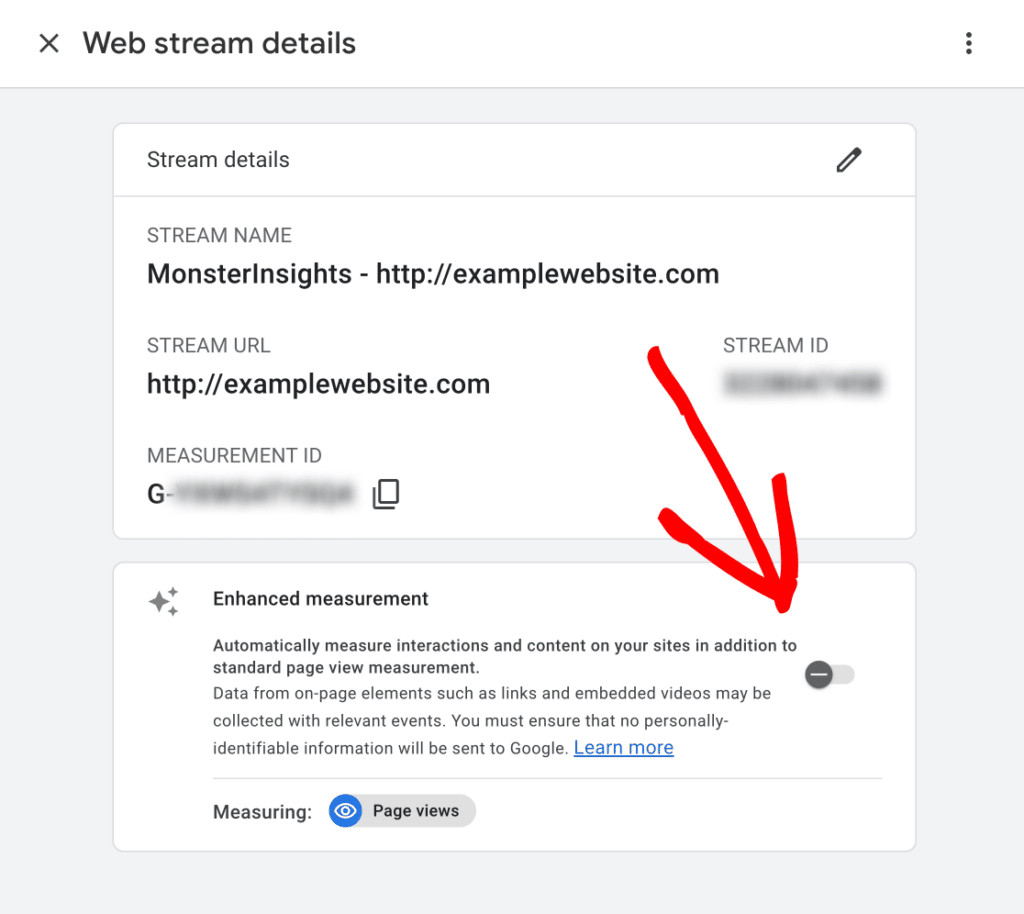
Go ahead and turn it on, then click on the gear icon to open up settings.
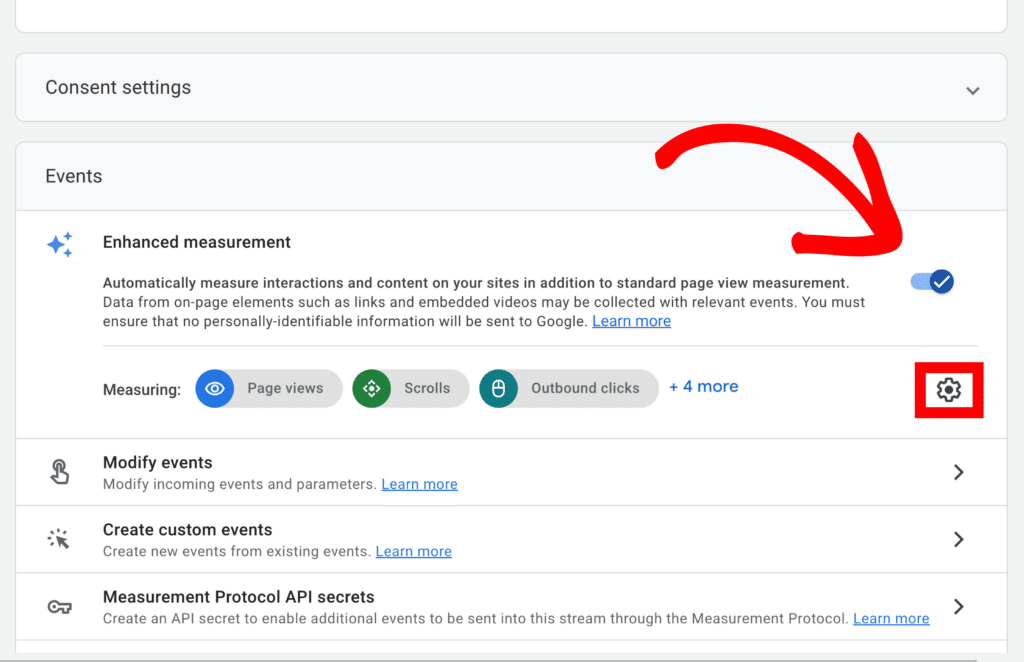
When the side panel opens, make sure Outbound clicks is switched to ON.
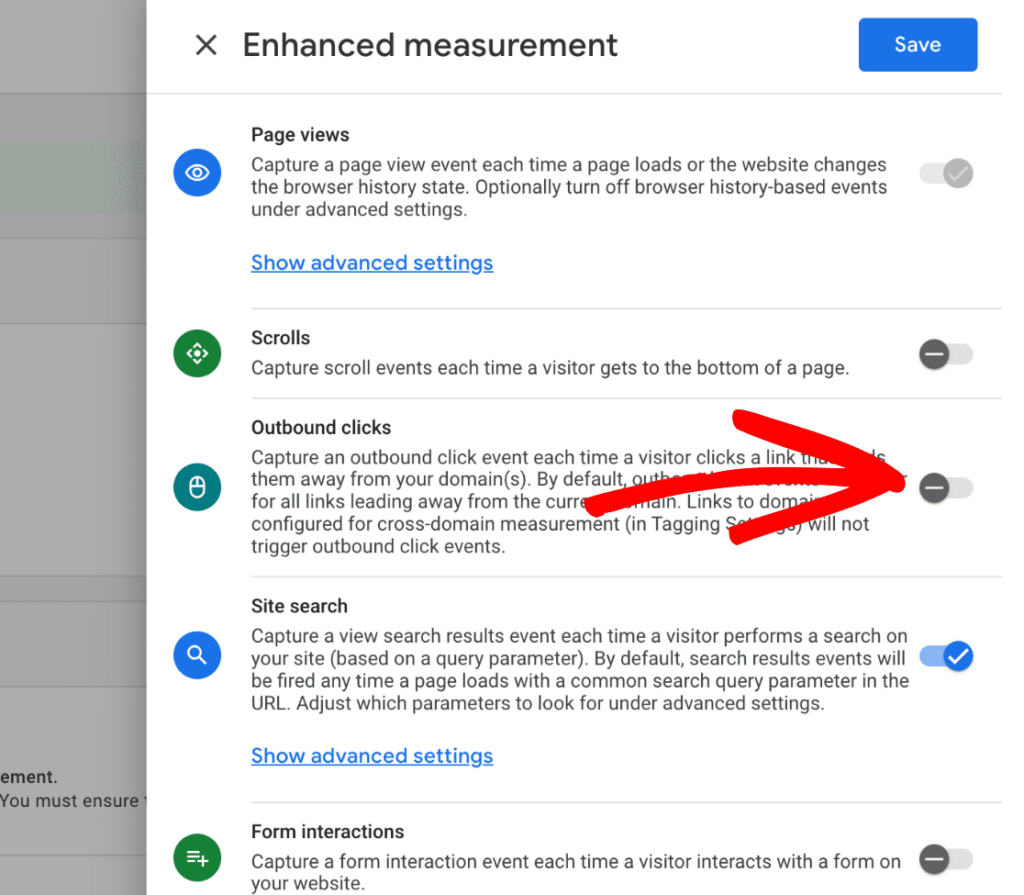
Once that’s done, you’ll start tracking outbound link clicks. After you have some data collected, you can create an outbound links report.
Start by going to the Explorations tab and clicking to start a Blank report:
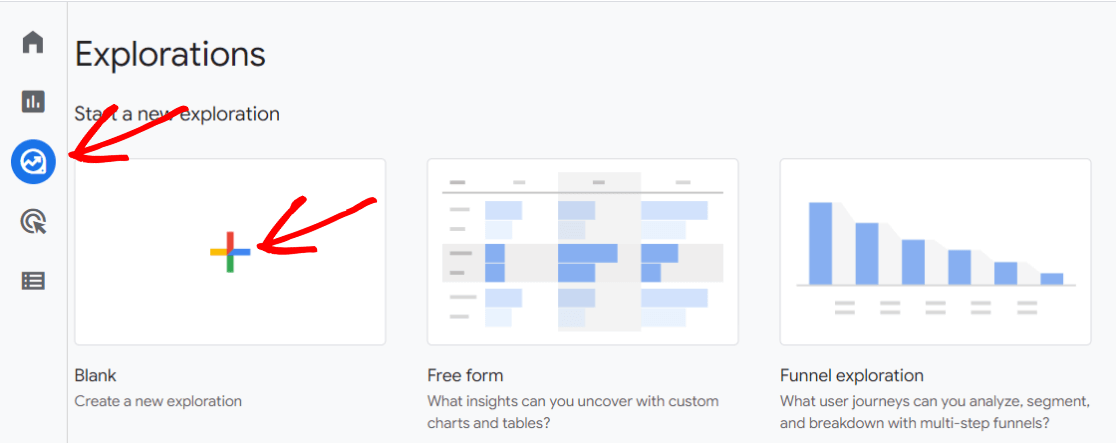
Now, give your report a name like Outbound Link Clicks, then click the plus sign in the Dimensions box:
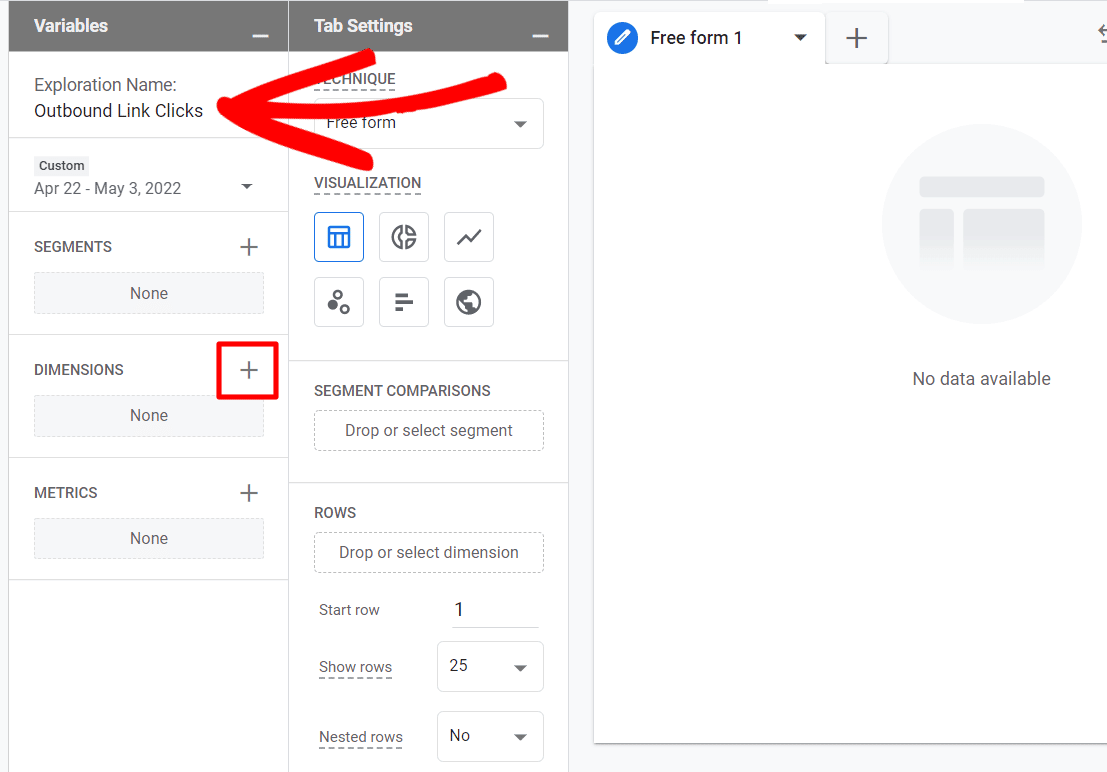
Now, search for and check the box by four Dimensions:
- Event name
- Link text
- Page title
- Outbound
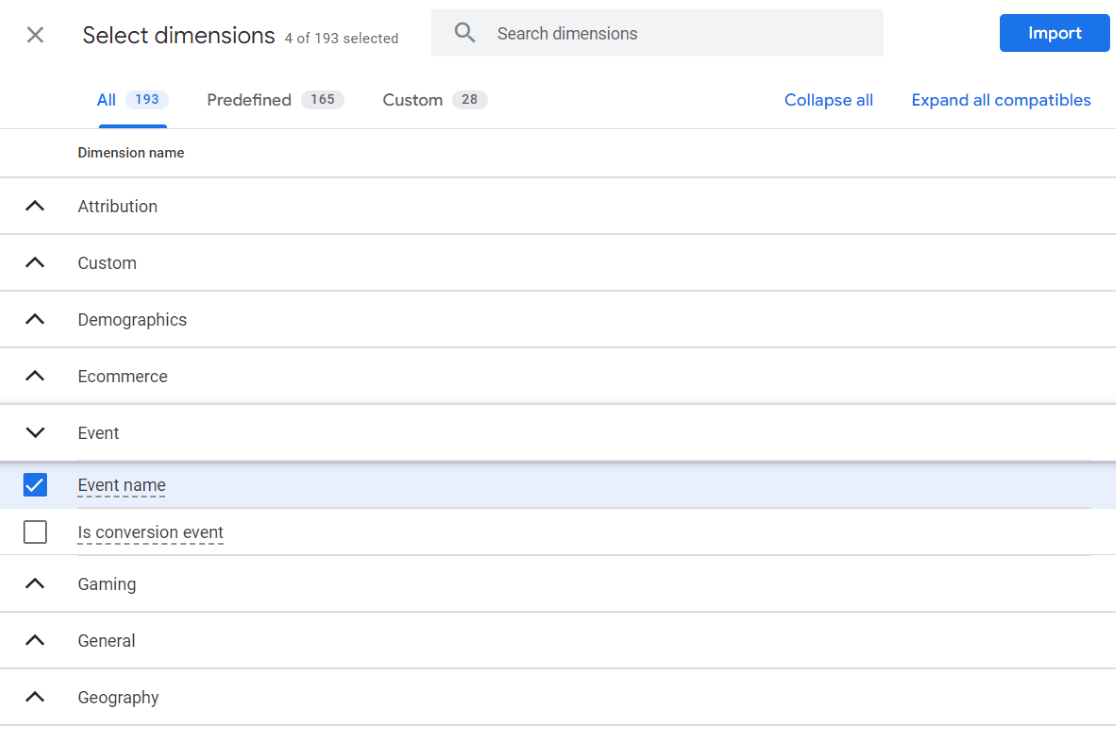
When you’ve checked all three, click the blue Import button.
Then, click the plus sign in the Metrics box, select Event count, and click Import:

Now, click and drag your Link Text and Page Title dimensions over into the Rows area:
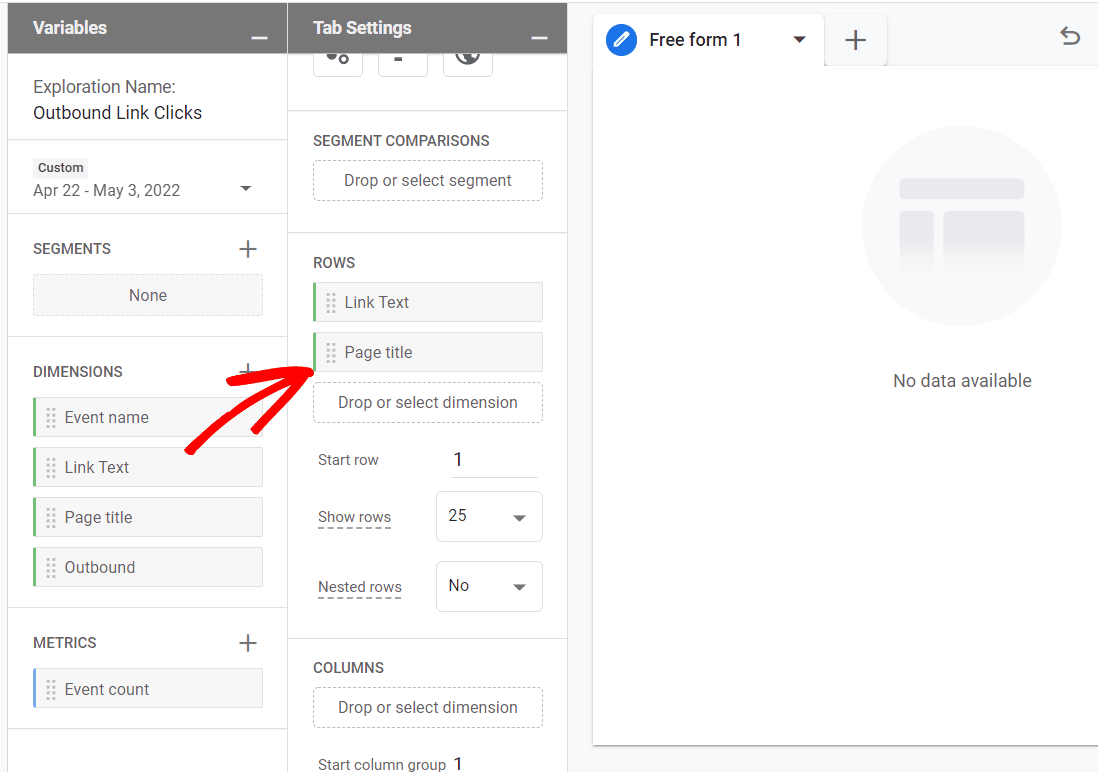
Then, click and drag the Event count metric over into the Values area:
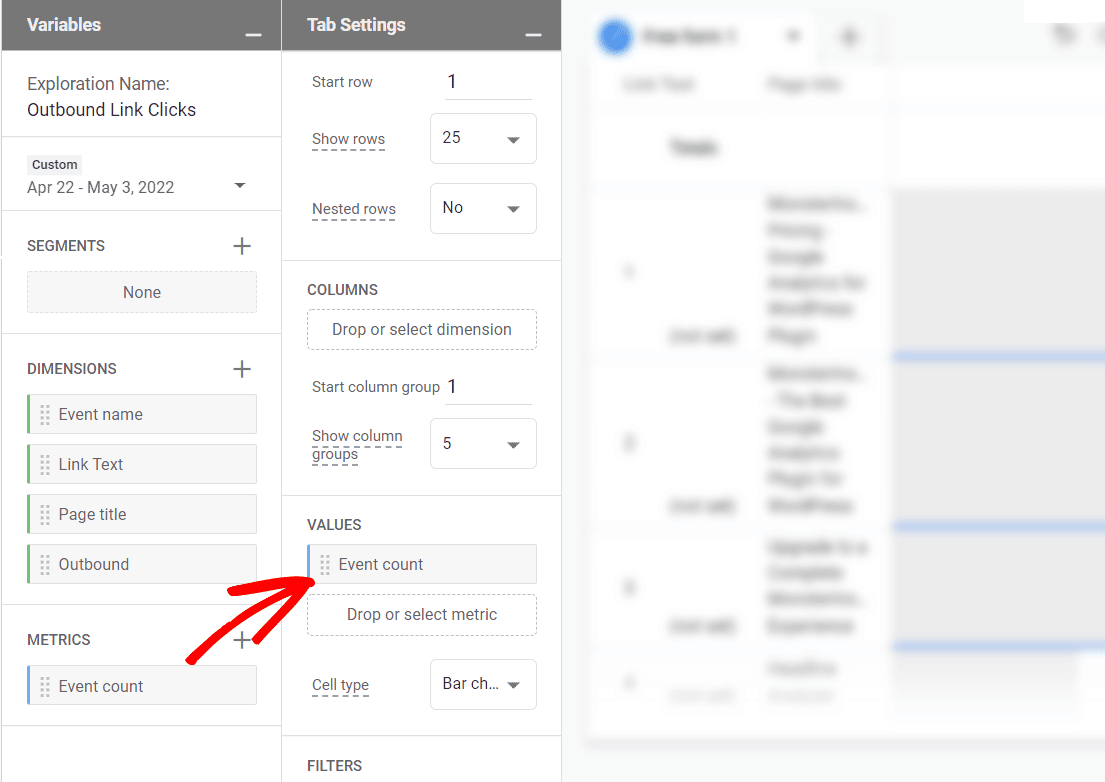
Now, click and drag your Event name dimension down into the Filters area. When it expands for you to enter details, choose Exactly matches and type in click. Then, click Apply.
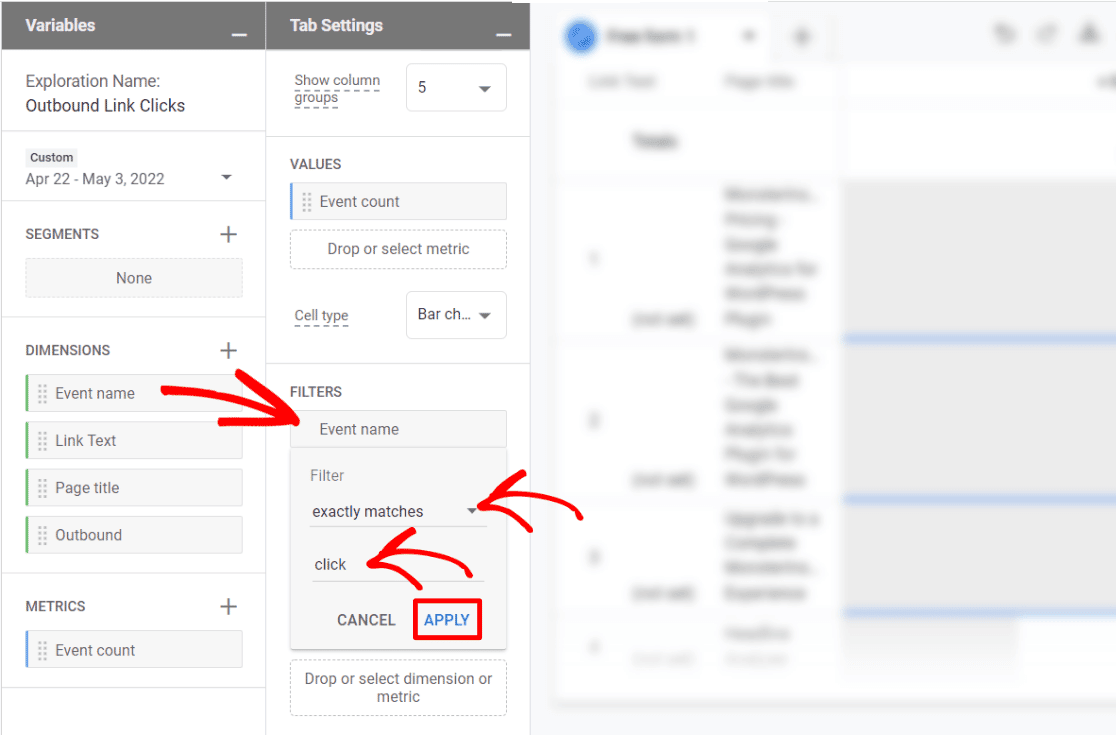
Finally, click and drag your Outbound dimension into the Filters area. Choose Exactly matches and type in true. Click Apply.
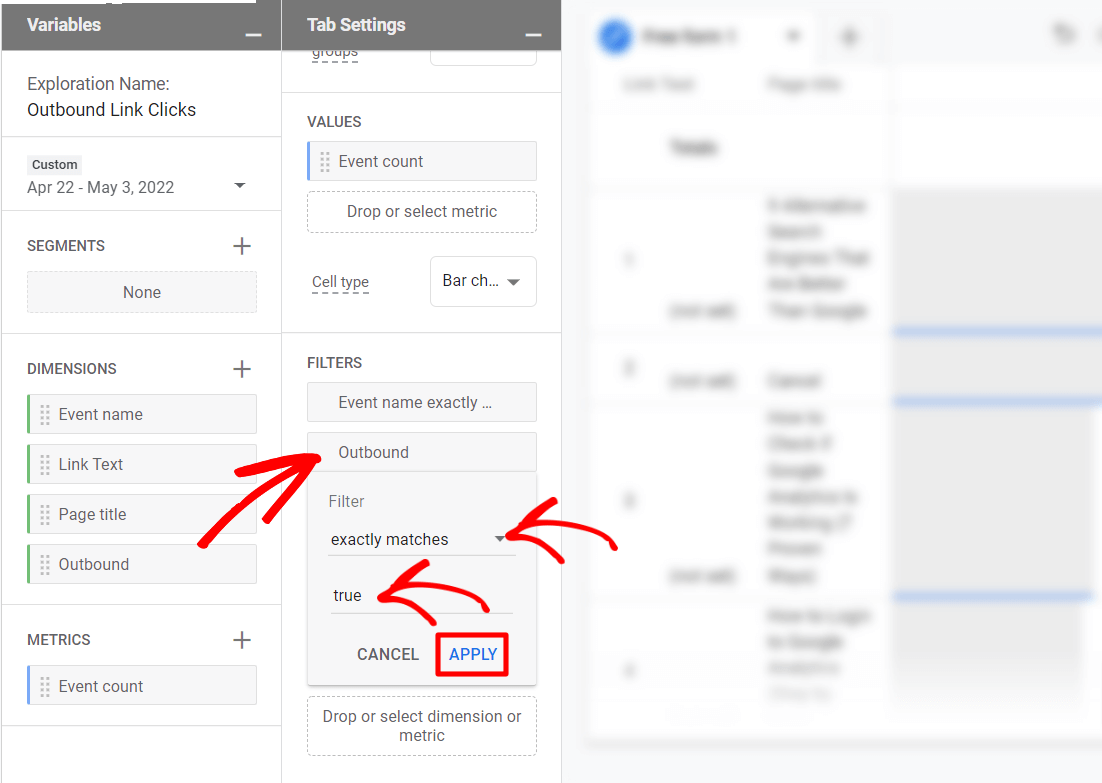
That’s it! You now have a custom report that shows you which outbound links were clicked on your site, and which pages those links are on.
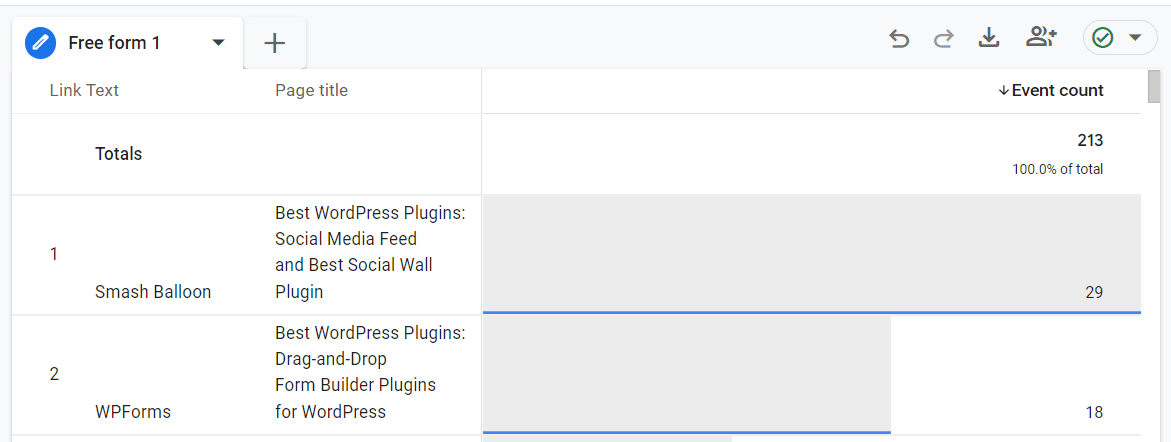
And that’s it!
I hope you liked this article on how to set up outbound link tracking in WordPress and Google Analytics. If you’re wondering what else you can do with MonsterInsights and how it differs from Google Analytics, check out MonsterInsights vs. Google Analytics – What’s the Real Difference?
Not using MonsterInsights yet? What are you waiting for?
Finally, don’t forget to follow us on Facebook and YouTube for more helpful reviews, tutorials, and Google Analytics tips.
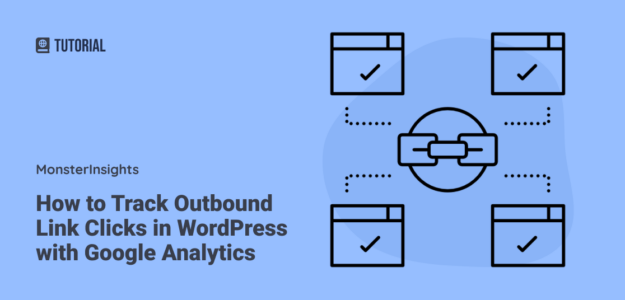
There is no ‘Explorations’ tab, so these instructions are impossible to follow.
Hi Jeff,
Are you using Google Analytics 4 or the older version, Universal Analytics? If you’re using Universal Analytics, those instructions are here. If you are in GA4, here’s a clearer screenshot of the Explore tab. Let us know if you need more help!
Google couldn’t have made GA4 harder if they tried! Anyway, I followed your instructions (thank you), and the graph shows the pages clicked on and the outbound click count, but not the outbound URL of what was clicked. Or am I missing something? Even on your image, under “That’s it!”, it doesn’t show what outbound URLs were clicked on. Appreciate your help 🙂
Hey Mike! Thanks for your question! You’re right, our report shows the text of the link, but not the link URL. That could definitely be handy to have! To get that, add another dimension to your report – Link URL – and drag it over to your Rows. That’ll add the outbound link URL. Let us know if it doesn’t work or you need something else!
Amazing, thank you for your help!
Thanks for this explanation. When tracking external clicks from our website, should we monitor Event Count or Sessions? Which number would be more accurate to show how many times each link was clicked?
Hi Gordy – If you’re creating the custom explore report we walk through in the article, it would be the event count for each link that you should look at.